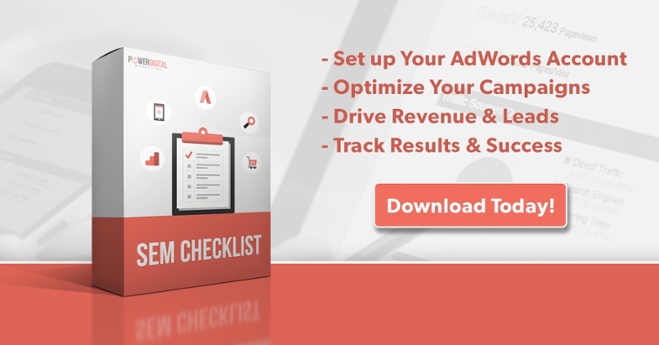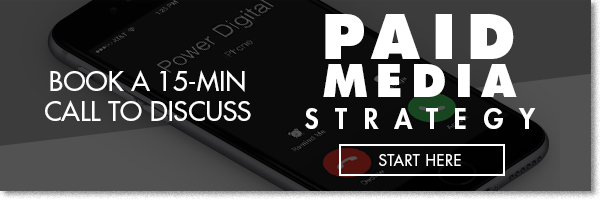Mobile ads have become more important than ever before. We use cell phones for almost everything in our lives from Facebook to emails to Google searches. Cell phones have allowed us to have access to the internet at the tip of our fingers (almost) anywhere at given anytime. Hitwise reported that ~58% of all search queries in the US are from mobile searches. This means that in this day and age one of the best ways to reach consumers is via mobile ads! Mobile ads have given marketers with new touch points to reach consumers.
IAB’s New Ad Portfolio
IAB’s New Ad Portfolio has created a guideline for the best practices for format and sizes of all ads. IAB introduces a standard ad unit and LEAN principles (Light, Encrypted, AdChoices supported, and Non-invasive) combining these to improve user experience and maximize publisher load performance. An ad unit is defined by set aspect ratios and minimum and maximum size ranges. The aspect ratio allows ads to have flexible sizing within the set ranges based on the screen size of the device being used.
Before this, standard ads used fixed pixel ranges that did not fit on all size screens. It’s extremely ineffective to have an ad that is only partially displayed on a user’s device. LEAN principles simply imply that having lightweight files minimize upload time and properly placed, non-invasive ads create a more enjoyable user experience. It is advised to use IAB’s New Ad Portfolio whenever creating an ad.
Mobile Ad Types
Banner
Banners are the oldest, simplest form of mobile ads, which also make banners the most popular ad type. It’s simply a banner that includes text and/or graphic placed at the top or bottom of the screen. Marketers can make these ads static or animated. Often, a banners success depends on brand recognition therefore widely known brands can leverage the small space without needing additional information.
Example:

Best Practices for Creating Banner Ads
- Aspect ratio: 6:1 (min: 300×50 pixels, max: 450×75 pixels)
- Max size: 100Kb
- Only highlight key feature(s) to avoid cluttering up the small space
- Have a clear call-to-action
- Simple practical designs by avoiding bright colors, too much text, and mediocre graphics.
Experts say “banner design needs a careful balance with subtle eye-catching content yet not too distracting”
Pros of Using Banner Ads:
- Compatible on all screens
- Executable in large volumes
- Cheapest format to produce
- Little time needed to utilize
- Uncomplicated integration
Cons of Using Banner Ads:
- Low eCPM (effective cost per mille) [eCPM = ad revenue generated ÷ number of ad impressions]
- Low CTR (click through rate)
- Low engagement rate
- Banner Blindness – When users unconsciously or consciously ignore banners due to its passive nature.
- Limited space
Video Ads
Video ads play when a user interacts with a mobile application or on mobile web. This is the most widely expanding mobile ad type, especially among big brands, due to the high engagement rate since users are forced to focused on the ad when using their mobile phone. Videos can autoplay or be initiated by the user.
Example:

Best Practices for Video Ads
- Max duration [Autoplay: preferably 15 seconds (30 seconds is ok), User initiated: Unlimited]
- Max file size [Autoplay: 1.1Mb, User initiated: Unlimited]
- File quality: 24 fps for all videos [18 fps may be used for lower bandwidth]
- Common video placements include: between games, among text, between content lists, before/after watching a user chosen video
- Create an enticing screen grab to encourage playing the video
- Autoplay videos should be played with muted audio [Allow users the option to initiate audio]
- Allow users to share the video to social media
Pros of Using Video Ads
- High eCPM
- Enjoyable for users to watch
- Focuses user attention
- Ideal for video games and brands
Cons of Using Video Ads
- Expensive to produce
- Intrusive when poorly placed
Native Ads
Native ads are meant to appear organic and fit seamlessly into the applications content by combining advertising message with user-centric content. It’s implemented by giving publishers components of the ad and then the publishers decide how to harmoniously display the elements in the app.
Example:

Standard Practices for Native Ads
- Common placements include: in content feed, in an article, outside core content, recommendation widgets
- Ad unit varies widely depending on placement and type [Refer to IAB’s New Ad Portfolio (page 25) for suggestions]
Pros of Using Native Ads
- Less intrusive mobile ad type
- High CTR
- High ad engagement rate
- Superior user experience
Cons of Using Native Ads
- Complicated integration
- More development work needed
Interstitial Ads
Interstitial ads cover the entire mobile screen which allows for more content such as a video or store locator. Interstitials are placed during a break in content experience and are not to be confused with pop-up ads which overlay over the content after the user has begun viewing. They are considered LEAN ads so ad units are not needed.
Standard Practices for Interstitial Ads
- Common pixel sizes: 320×480, 300×400, and 300×250 [Not limited to these sizes]
- Max size: 600Kb
- Appear during breaks in content experience, similar to video placement [Avoid placing it in the middle of a game or while viewing content]
- Close or cancel button at top right corner of the ad
Pros of Using Interstitial Ads
- Large space for more content
- Visually compelling
- High CTR rate
- High impressions and conversions
- Option of animated or interactive content
Cons of Using Interstitial Ads
- Poor placement can be intrusive
- Falsely high CTR due to misscliks or hard to close ads
- More design work and thought on placement needed
Rich Media Ads
Rich media ads are interactive and highly dynamic such as mini-games or expandable ads. They generate high CTR and conversions by creatively engaging with the users. Rich media are considered LEAN ads so ad units are not needed.
Standard Practices for Rich Media Ads
- Common sizes are 320×480, 300×400, and 300×250 pixels [Expandable ads can start as a banner]
- Highly creative form of advertisements allow for a lot of flexibility on size and content, the sky’s the limit!
Pros of Using Rich Media Ads
- High engagement rate
- High CTR
Cons of Using Rich Media Ads











